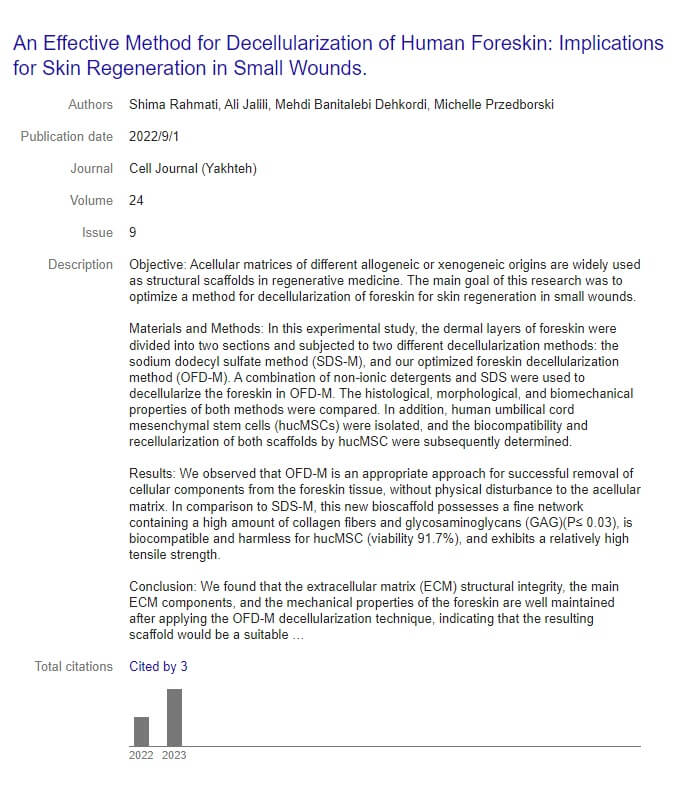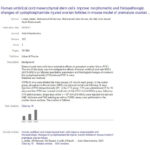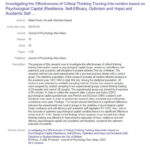An Effective Method for Decellularization of Human Foreskin: Implications for Skin Regeneration in Small Wounds

An Effective Method for Decellularization of Human Foreskin: Implications for Skin Regeneration in Small Wounds.
Authors Shima Rahmati, Ali Jalili, Mehdi Banitalebi Dehkordi, Michelle Przedborski
Publication date 2022/9/1
Journal Cell Journal (Yakhteh)
Volume 24
Issue 9
Description Objective: Acellular matrices of different allogeneic or xenogeneic origins are widely used
as structural scaffolds in regenerative medicine. The main goal of this research was to optimize a method for decellularization of foreskin for skin regeneration in small wounds.
Materials and Methods: In this experimental study, the dermal layers of foreskin were divided into two sections and subjected to two different decellularization methods: the sodium dodecyl sulfate method (SDS-M), and our optimized foreskin decellularization method (OFD-M). A combination of non-ionic detergents and SDS were used to decellularize the foreskin in OFD-M. The histological, morphological, and biomechanical properties of both methods were compared. In addition, human umbilical cord mesenchymal stem cells (hucMSCs) were isolated, and the biocompatibility and recellularization of both scaffolds by hucMSC were subsequently determined.
Results: We observed that OFD-M is an appropriate approach for successful removal of cellular components from the foreskin tissue, without physical disturbance to the acellular matrix. In comparison to SDS-M, this new bioscaffold possesses a fine network containing a high amount of collagen fibers and glycosaminoglycans (GAG) (P≤ 0.03), is biocompatible and harmless for hucMSC (viability 91.7%), and exhibits a relatively high tensile strength.
Conclusion: We found that the extracellular matrix (ECM) structural integrity, the main ECM components, and the mechanical properties of the foreskin are well maintained after applying the OFD-M decellularization technique, indicating that the resulting scaffold would be a suitable …
Total citations Cited by 3
2022 2023


